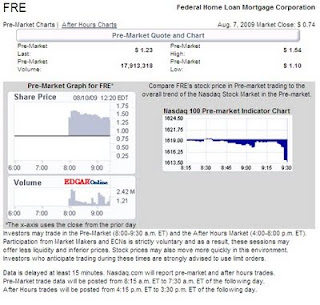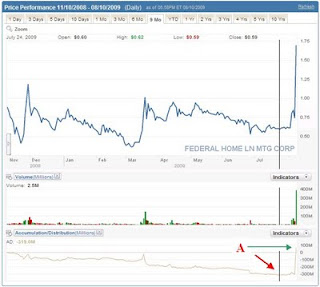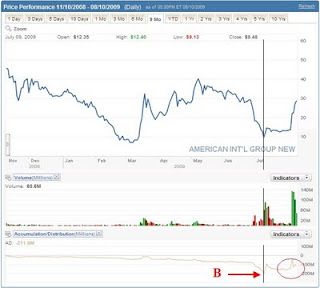While enjoying an episode of EconTalk, we came across the following commentary:
Russ Roberts (host): And, in the area of systemic risk, which is a term that's been used a lot recently related to the financial sector, the Crisis of 2008, the issue of Too Big to Fail--how are we doing on measuring systemic risk and quantifying it?
Lars Peter Hansen (guest): Yeah. I think there we are at the very primitive stages. I'm certainly happy--that be an example where our knowledge probably is still quite meager. The term 'systemic risk' really was not on people's radar screen prior to the financial crisis. And it only became a topic of conversation among academics and policy makers prominently, after the financial crisis. Now, systemic risk, it's had a little bit of a danger of being a buzzword.
The response by the guest Lars Peter Hansen struck us as odd. The “financial crisis” that Hansen was referring to was from approximately 2007 t0 2009. There are some who believe that the “crisis” still isn’t over because the government bailouts only masked the hemorrhage that will ultimately reveal itself down the road.
The challenge we have with Hansen’s statement is when he said that the term “systemic risk” was not on anyone’s radar prior to the “financial crisis.” Looking at the New York Times an Google Trends, it seems to indicate that there were some references to the specific term “systemic risk” as early as 1988, in the case of the New York Times.
Likewise, the data from Google Trends shows a sizable initial 2004 level (233) of references to the term “systemic risk” relative to the peak in 2009 (600). The New York Times references jumped significantly from 3 in 2004 to 82 by the 2009 peak. Somebody was out there concerned with the concept of “systemic risk” and they were either writing or searching on the topic.
Because Google Trends “data” begins in 2004, we have to discount that the data is skewed. However, the peak and subsequent decline in both sources suggests that, over time, the references to the term will generally mirror each other.
So far, we have over simplified the concept of whether there was awareness of the concept of “systemic risk” as it relates to the economy and more specifically the housing environment which brought about other important discussions of concepts like “too-big-to-fail” or “too-small-to-save.” Now we will be more specific about the idea of systemic risk through a government source (OFHEO) that had the term “systemic risk” in the title of a published paper on housing.
On the Federal Housing Finance Agency (FHFA) website (formerly Office of Federal Housing Enterprise Oversight), there is a research paper titled “Systemic Risk: Fannie Mae, Freddie Mac and the Role of OFHEO” which was published on February 4, 2003 (PDF here). It is worth noting that as with all business or organization name changes, it was done in an effort to distance or disassociate the organization from previous activities.
This research paper, “Systemic Risk: Fannie Mae, Freddie Mac and the Role of OFHEO”, specifically commissioned in direct response to the Long-Term Capital Management debacle (PDF here), attempted to outline and identify the various stages that Fannie Mae and Freddie Mac posed systemic risk to the financial system. The goal was to anticipate and respond when and if the potential risks materialized.
What was the response to the February 4, 2003 OFHEO report? On February 5, 2003, the president of the United States attempted to fire the head of OFHEO, Armando Falcon, and replace him with the head of a derivatives trading firm and former managing director of J.P. Morgan, Mark C. Brickell. The firing did not take place but Falcon was ultimately pushed aside in favor of James Lockhart. Lockhart “…lifted the safety restraints imposed by Mr. Falcon and repeatedly assured investors the companies [Fannie Mae and Freddie Mac] were adequately capitalized.” We hazard to say that the rest is history, but it seems this is literally what will happen.
First, the term “systemic risk” has had multiple permutations and a different arrangement of words that cloak modern academics and policymakers in a cloud of mystery when it comes to understanding the basic history of an ongoing problem. As we said in our December 30, 2018 “New York Times Recession/Depression Index”:
“In our modern era, the terms ‘panic’ and ‘depression’ are no longer an acceptable part of the general lexicon to denote a decline in economic activity. However, in the late 18th and early 19th century, they told it like it was. in the mid- to late 20th century, the word ‘recession’ replaced the word panic or depression.”
The tendency has been for the modern world to shift the nature and use of language. However, this shift leaves important data on the cutting room floor, potentially to never be seen again.
Second, the initial reaction to the report issued by Armando Falcon and proposing to install the head of a derivative trading firm as the replacement says all that we needed to know about how policymakers respond to the slightest mention of a solution before there is a problem. There is little incentive to openly think about and discuss a problem when the consequences mean you cannot be in the right role at the right time to explore the risks and remedies. The report issued by Falcon could now be view as a “how to manual” rather than a “how not to manual.”
Finally, in looking at the “data” on the word “systemic risk,” we find that the risk of it become a “buzzword” is only relative to the times and will morph and fade with all other references to the same concept with a new permutation as we have noted with the use of the word “recession” replacing the word “panic” or “depression.”
sources:
-
Roberts, Russ. EconTalk. Hansen on Risk, Ambiguity, and Measurement. June 30, 2014. link. accessed April 8, 2019.
-
Systemic Risk: Fannie Mae, Freddie Mac and the Role of OFHEO. Federal Housing Finance Agency. February 4, 2003. link. accessed February 2003.
-
Jo Becker, Sheryl Gay Stolberg, and Stephen Labaton. “White House Philosophy Stoked Mortgage Bonfire: The Reckoning”. New York Times. December 21, 2008. page 1. accessed April 9, 2019.
-
New York Times. “Black Chief to Oversee Fannie Mae and Freddie Mac”. February 5, 2003. page C4. accessed April 9, 2019.
-
Google Trends. trends.google.com. “systemic risk” (United States). link. accessed April 9, 2019.
-
Proquest. New York Times Historical Database 1851-2015. “systemic risk”. accessed April 9, 2019.
-
New York Times Recession/Depression Index. December 30, 2018. New Low Observer. link.





